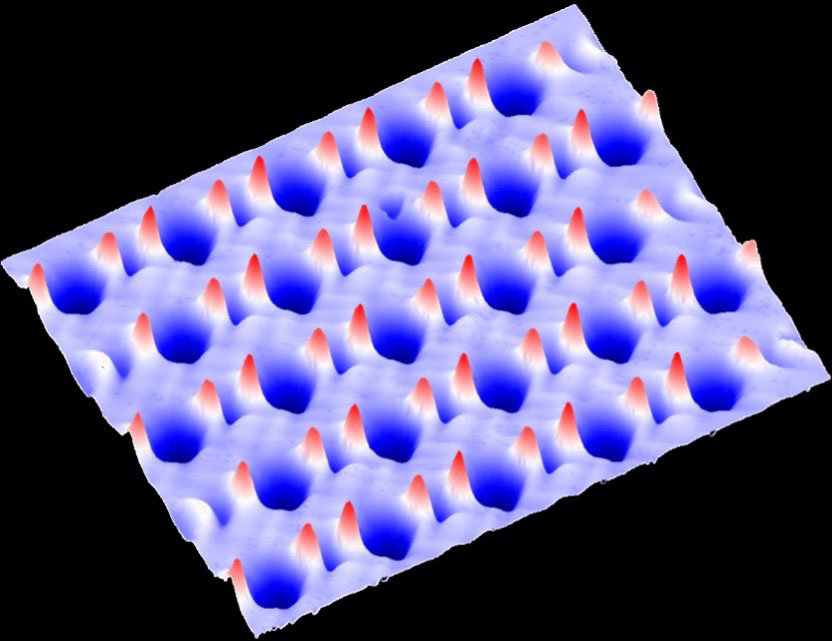| Jul 21, 2023 | |
Revolutionizing light control with a new class of crystals |
|
| (Nanowerk Spotlight) Manipulating light at dimensions smaller than its wavelength, a scale known as the subdiffractional scale, is a critical capability in various fields such as imaging, optical communication, integrated optical circuits, and molecular sensing. A promising way to control light at this tiny scale is through the use of polaritonic crystals (PoCs). | |
| Photonic crystals are periodic optical nanostructures that affect the motion of photons in much the same way that ionic lattices affect electrons in solids. They can control and manipulate the flow of light. Polaritonic crystals are a type of photonic crystal that are made from polaritonic media, which can support polaritons - quasiparticles resulting from strong interactions between photons and electric dipole oscillations. | |
| Based on the permittivity of the media they are made from, PoCs can be categorized into three types: isotropic, elliptic, and hyperbolic PoCs. Permittivity is a measure of how an electric field affects, and is affected by, a dielectric medium. It's a property that tells us how much electric charge a material can store in an electric field, hence affecting the speed of light in that medium. | |
| Isotropic PoCs have the same permittivity in all directions, meaning the behavior of the polaritons is the same no matter which direction they are moving in within the crystal. Elliptic PoCs have permittivity that varies in different directions, but in a specific way that forms an ellipse if you were to graph the directions and the corresponding permittivity. This means that the behavior of the polaritons varies depending on the direction, but in a predictable, elliptical pattern. | |
| Hyperbolic PoCs, the most complex type, have permittivity that varies in different directions, but in a way that forms a hyperbola if you were to graph the directions and the corresponding permittivity. This means that the behavior of the polaritons varies depending on the direction, but in a more complex, hyperbolic pattern. | |
| Conventional photonic crystals made of bulk materials such as silicon and metal, and recent polariton-based photonic crystals made of van der Waals materials such as graphene and hBN, all have an isotropic nature. This symmetry leads to trapped light patterns that are highly symmetric. Moreover, the light trapping resonances in these conventional symmetric polaritonic crystals are extremely sensitive to any defects or irregularities in the engineered nanostructured pattern. | |
| A recent research study in Nature Communications ("Hyperbolic polaritonic crystals with configurable low-symmetry Bloch modes"), led by Dr Yingjie Wu from Zhejiang University, Prof Cheng-Wei Qiu from National University of Singapore, and Dr Qingdong Ou from Macau University of Science and Technology, presents a type of asymmetric photonic crystals based on in-plane hyperbolic phonon polaritons in perforated van der Waals crystal α-MoO3, showing configurable and low-symmetry deep-subwavelength Bloch modes that are robust against lattice rearrangement in specific directions. | |
 |
|
| Low-symmetry Bloch modes in hyperbolic PoCs based on anisotropic 2D α-MoO3 crystal. (Image courtesy of the researchers) | |
| "By periodically poking nanoscale holes in a MoO3 crystal slab, we created hyperbolic polaritonic crystals that can trap infrared light patterns propagating predominantly along one crystal direction," Dr. Ou, one of the paper's corresponding authors, tells Nanowerk. "Unlike conventional symmetric crystal structures, rotating the pattern of holes produced skewed, low-symmetry light modes in these hyperbolic MoO3 crystals. Remarkably, defects introduced in the hole pattern along the forbidden light propagation direction did not affect the primary resonance wavelength." | |
| By tuning the hole sizes and placements, the researchers could control the trapped light patterns and resonance frequencies over a broad infrared bandwidth. Their findings introduce hyperbolic polaritonic crystals as a new member to the photonic crystal family, with unique asymmetric optical properties. Further research on these engineered asymmetric crystals could enable novel applications in microscopy, sensing, on-chip photonic circuits and more. | |
| The researchers also fabricated a diamond-type hyperbolic PoCs with a similar arrangement to a square-type PoC rotated by 45 degrees. This was done to analyze the polaritonic behavior of different lattice structures. Interestingly, the strongest absorption peaks of the diamond- and square-type PoCs were found to lie at almost the same frequency. | |
| "Our work demonstrates that specially engineered asymmetric photonic crystals can provide new approaches to tightly manipulate light for advanced technologies," Ou concludes. "It also highlights the potential of layered materials like MoO3 as tunable platforms for controlling light at the nanoscale using polaritonic crystals." | |
| The study expands the toolkit for nanophotonic research by unveiling the unique physics of anisotropic polaritonic crystal structures. In conclusion, this research presents a significant step forward in the field of light manipulation. The development of hyperbolic PoCs based on α-MoO3 opens up new possibilities for controlling light at the subwavelength scale, with potential applications in various fields such as optical communication and molecular sensing. | |
 By
Michael
Berger
– Michael is author of three books by the Royal Society of Chemistry:
Nano-Society: Pushing the Boundaries of Technology,
Nanotechnology: The Future is Tiny, and
Nanoengineering: The Skills and Tools Making Technology Invisible
Copyright ©
Nanowerk LLC
By
Michael
Berger
– Michael is author of three books by the Royal Society of Chemistry:
Nano-Society: Pushing the Boundaries of Technology,
Nanotechnology: The Future is Tiny, and
Nanoengineering: The Skills and Tools Making Technology Invisible
Copyright ©
Nanowerk LLC
|
|
|
Become a Spotlight guest author! Join our large and growing group of guest contributors. Have you just published a scientific paper or have other exciting developments to share with the nanotechnology community? Here is how to publish on nanowerk.com. |
|
